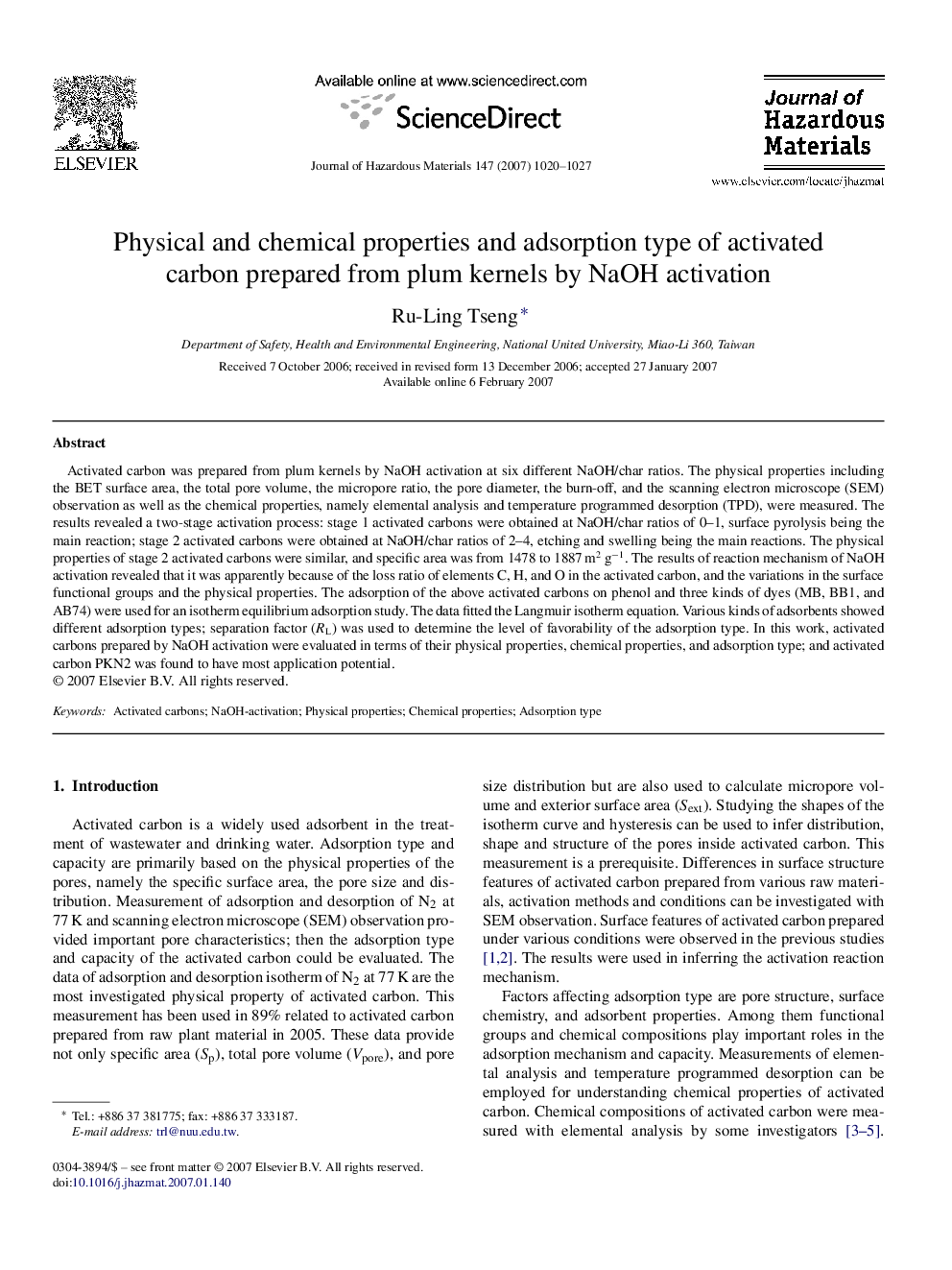| کد مقاله | کد نشریه | سال انتشار | مقاله انگلیسی | نسخه تمام متن |
|---|---|---|---|---|
| 583898 | 877879 | 2007 | 8 صفحه PDF | دانلود رایگان |
عنوان انگلیسی مقاله ISI
Physical and chemical properties and adsorption type of activated carbon prepared from plum kernels by NaOH activation
دانلود مقاله + سفارش ترجمه
دانلود مقاله ISI انگلیسی
رایگان برای ایرانیان
کلمات کلیدی
موضوعات مرتبط
مهندسی و علوم پایه
مهندسی شیمی
بهداشت و امنیت شیمی
پیش نمایش صفحه اول مقاله

چکیده انگلیسی
Activated carbon was prepared from plum kernels by NaOH activation at six different NaOH/char ratios. The physical properties including the BET surface area, the total pore volume, the micropore ratio, the pore diameter, the burn-off, and the scanning electron microscope (SEM) observation as well as the chemical properties, namely elemental analysis and temperature programmed desorption (TPD), were measured. The results revealed a two-stage activation process: stage 1 activated carbons were obtained at NaOH/char ratios of 0-1, surface pyrolysis being the main reaction; stage 2 activated carbons were obtained at NaOH/char ratios of 2-4, etching and swelling being the main reactions. The physical properties of stage 2 activated carbons were similar, and specific area was from 1478 to 1887Â m2Â gâ1. The results of reaction mechanism of NaOH activation revealed that it was apparently because of the loss ratio of elements C, H, and O in the activated carbon, and the variations in the surface functional groups and the physical properties. The adsorption of the above activated carbons on phenol and three kinds of dyes (MB, BB1, and AB74) were used for an isotherm equilibrium adsorption study. The data fitted the Langmuir isotherm equation. Various kinds of adsorbents showed different adsorption types; separation factor (RL) was used to determine the level of favorability of the adsorption type. In this work, activated carbons prepared by NaOH activation were evaluated in terms of their physical properties, chemical properties, and adsorption type; and activated carbon PKN2 was found to have most application potential.
ناشر
Database: Elsevier - ScienceDirect (ساینس دایرکت)
Journal: Journal of Hazardous Materials - Volume 147, Issue 3, 25 August 2007, Pages 1020-1027
Journal: Journal of Hazardous Materials - Volume 147, Issue 3, 25 August 2007, Pages 1020-1027
نویسندگان
Ru-Ling Tseng,